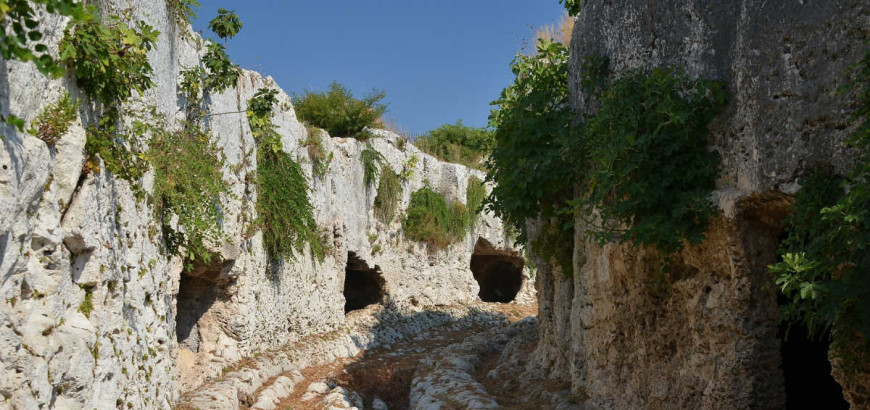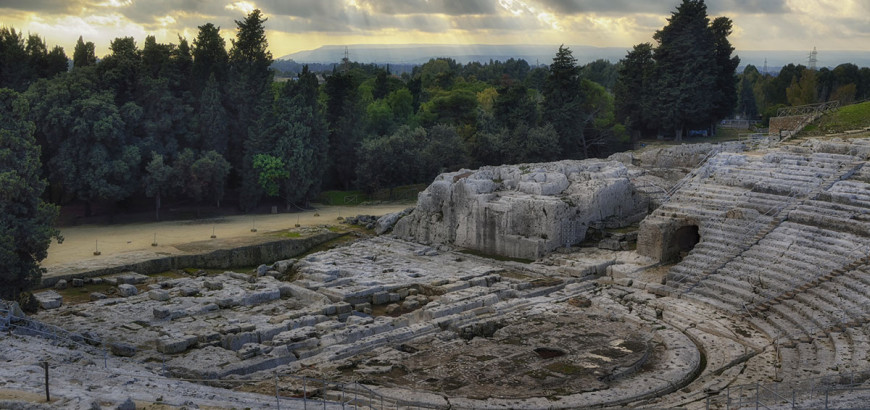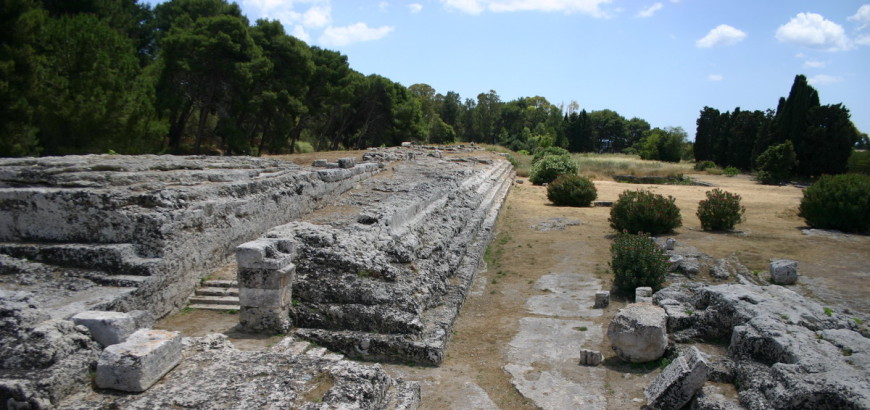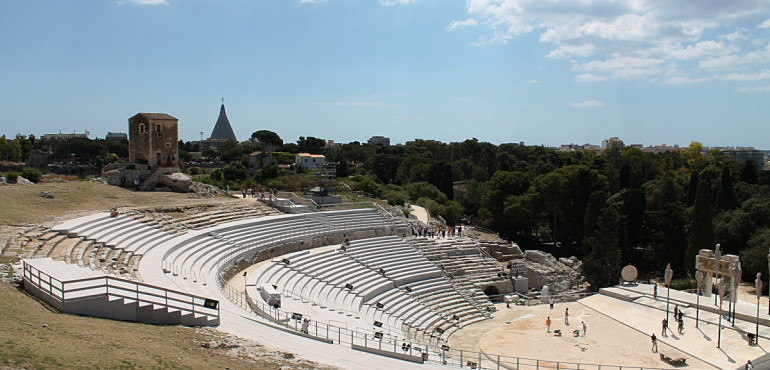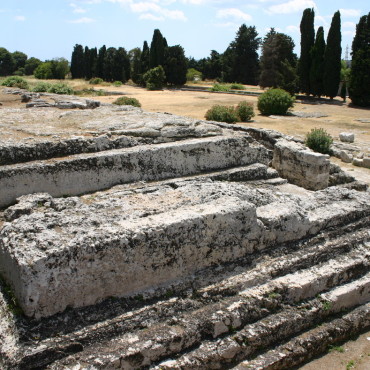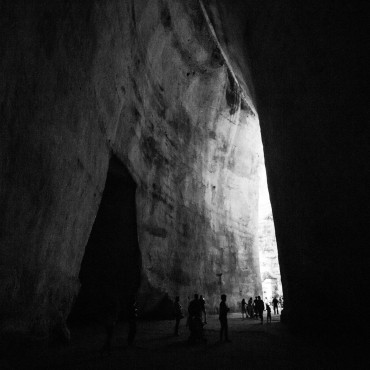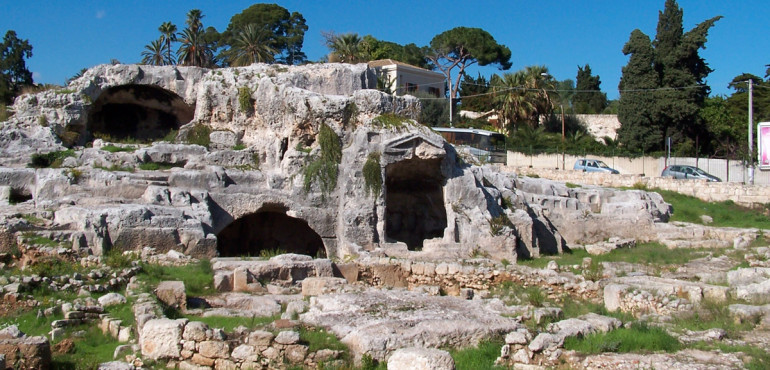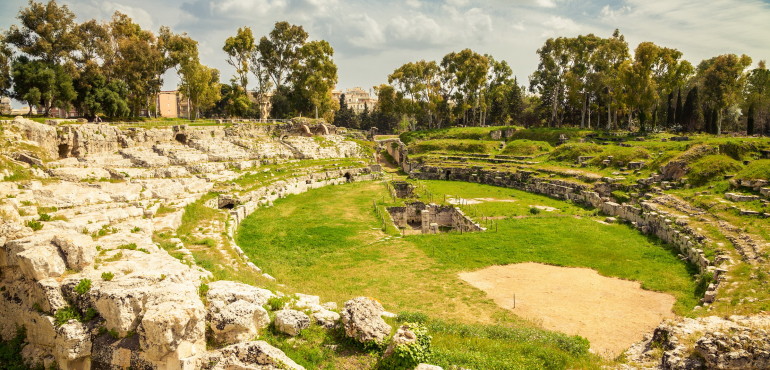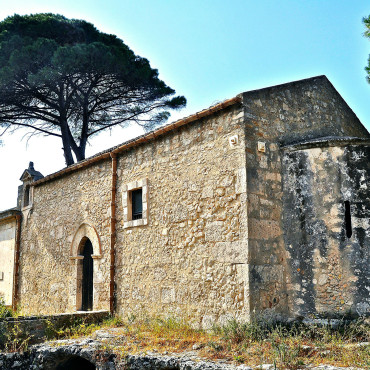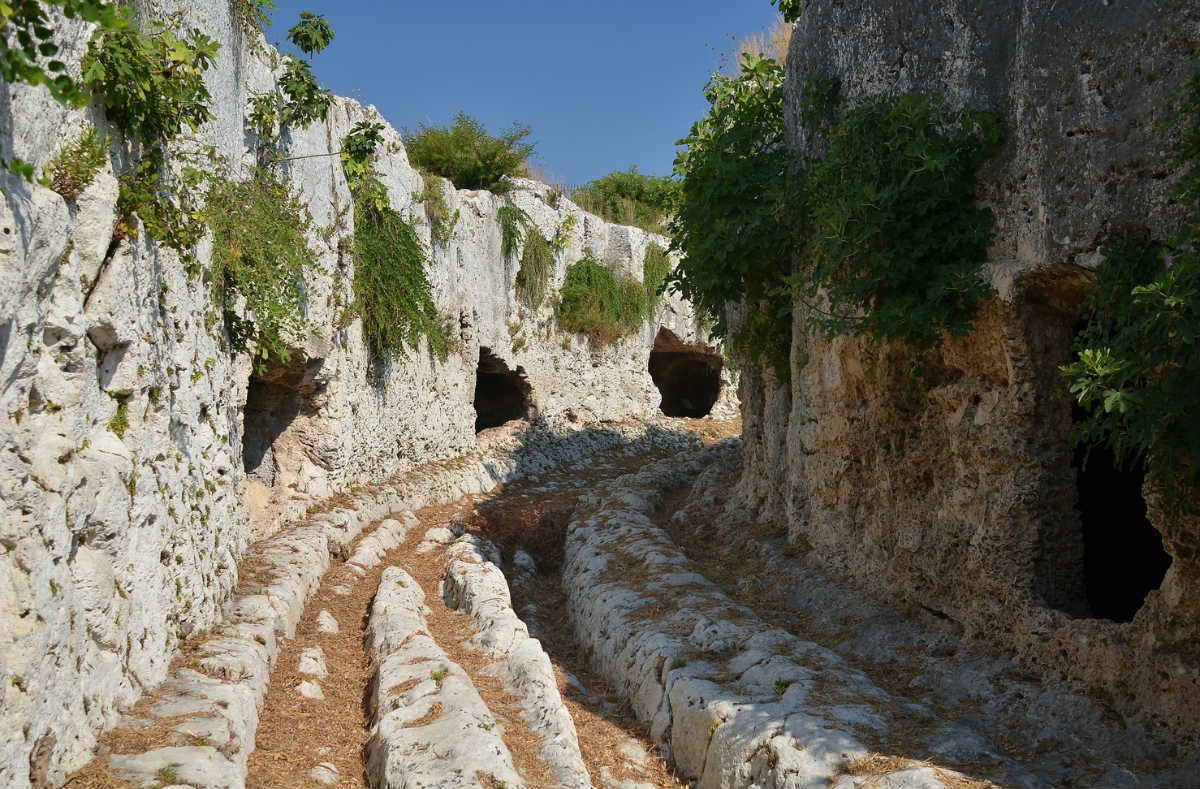
While visiting the great historical and natural area of Temenite hill, you’ll understand the grandeur of the Greek city.
Siracusa is home to one of the largest archaeological areas in Sicily and the entire Mediterranean area: 240.000 square metres of white stone and perfumed Mediterranean vegetation.
Walking through its paths rich in olive and citrus trees, you will encounter monuments built in different periods.
On the highest point of the hill is the Greek Theatre where the I.N.D.A. foundation still performs its classical plays. Visitors of every age are amazed by the sight of this impressive location overlooking the city.
To the south there is the Altar of Ierone II. A great sacrificial altar, commissioned by the tyrant, where 450 bulls could be sacrificed at one time.
Don’t miss the Latomie, deep stone quarries where the vegetation alternates with rocks dug by men and erosion caused by weather conditions. The Latomia of Paradise is the biggest. According to the legend the tyrant Dionysus used to listen to his slaves conversations in this cave that resembles an ear canal. In the cave, known as the Orecchio di Dioniso (the Ear of Dionysus) every whisper echoes.
Going through the gallery, you will see the Latomia of Intagliatella, the Latomia of St. Venera and the necropolis of Grotticelle. The people of Siracusa believe that the necropolis hosts the tomb of the beloved scientist of Siracusa: Archimedes.
Also the Romans and the Normans built their monuments in this park. To the south, among the pomegranate trees, there is in fact the Roman amphitheatre. At the entrance there is the church of St. Nicolò ai Cordari, built by the Normans over the remains of a Roman building.
